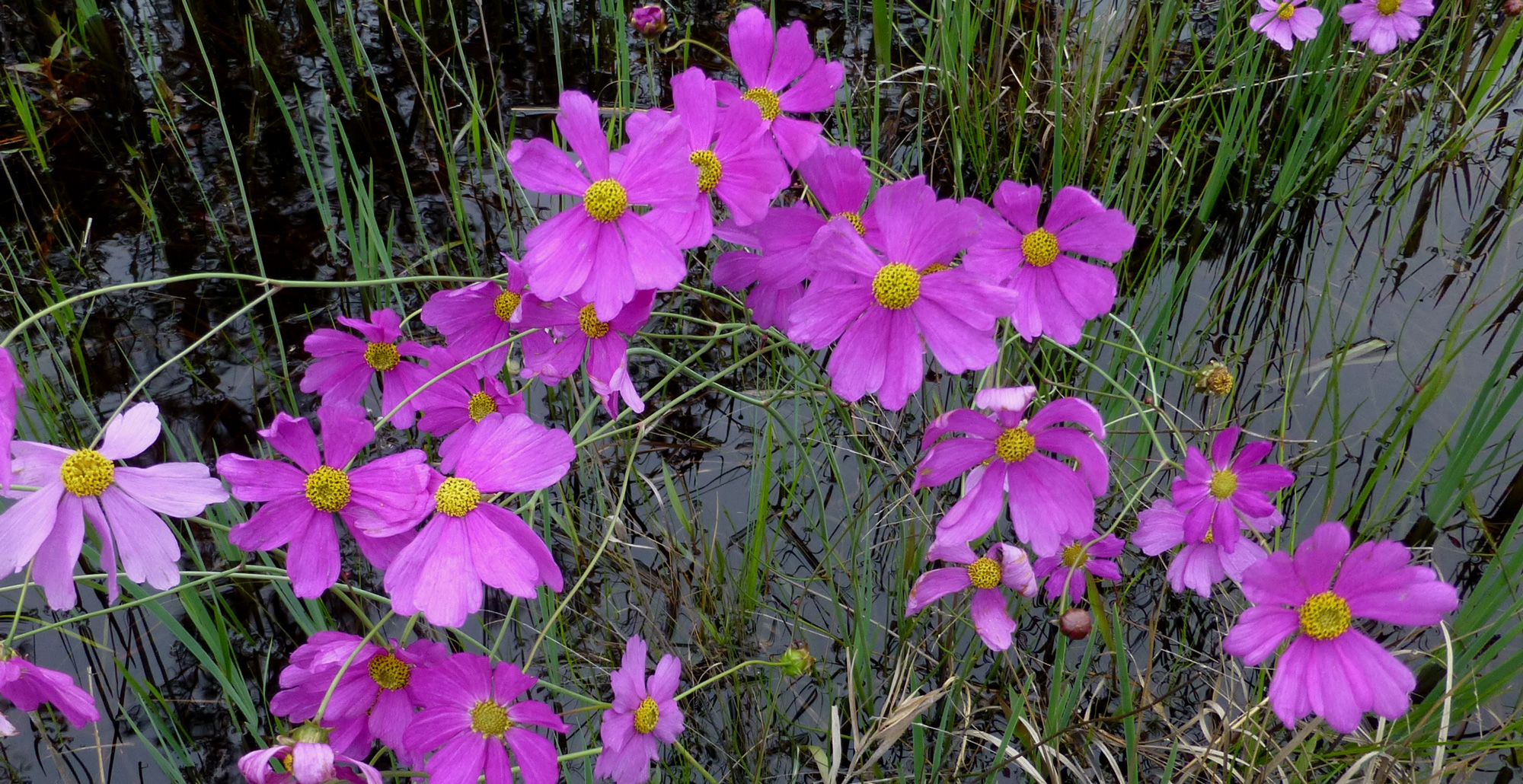Swamp tickseed
Pictured above: Swamp tickseed (Coreopsis nudata) by Eleanor Dietrich. Click on terms for botanical definitions. View post as a PDF.
Swamp tickseed (Coreopsis nudata) is a short-lived perennial with charming pink and yellow blooms. The flower is comprised of vivid purplish-pink ray florets that can be up to 1” long and are notched. They surround a compact center of bright yellow disk florets. Leaves are linear and more abundant at the base of the stem, becoming smaller and fewer as they ascend it. Stems are slender, glabrous and may be branched. The fruit is an elliptic-shaped achene.
Swamp tickseed occurs naturally in wet prairies, bogs, seepage slopes, wet flatwoods and roadside ditches. It blooms in spring (typically April and May) and is attractive to bees, although butterflies and other pollinators are known to visit them. Birds eat its seeds.
One of 14 species of Coreopsis native to Florida, Swamp tickseed is the only one that is pink. It is often confused with the non-native Cosmos bipinnatus.
The genus Coreopsis comes from the Greek koris, or “bug,” and opsis, or “appearance,” and refers to the shape of the seed (as does the common name “tickseed”). The species name nudata means “nude” or “without leaf.”
Family: Asteraceae (Aster, daisy or composite family)
Native range: Panhandle, several counties in the northern peninsula
To see where natural populations of Swamp tickseed have been vouchered, visit florida.plantatlas.usf.edu.
Hardiness: Zones 8A–8B
Soil: Wet sand, loam or muck
Exposure: Full to partial sun
Growth habit: 3–5’ tall
Propagation: Seed
Garden tips: Swamp tickseed is easy to grow from seed. It requires consistent soil moisture to persist.
Swamp tickseed plants are occasionally available from nurseries that specialize in Florida native plants. Visit www.plantrealflorida.org to find a nursery in your area.
For more information on other Coreopsis species, see these resources:

